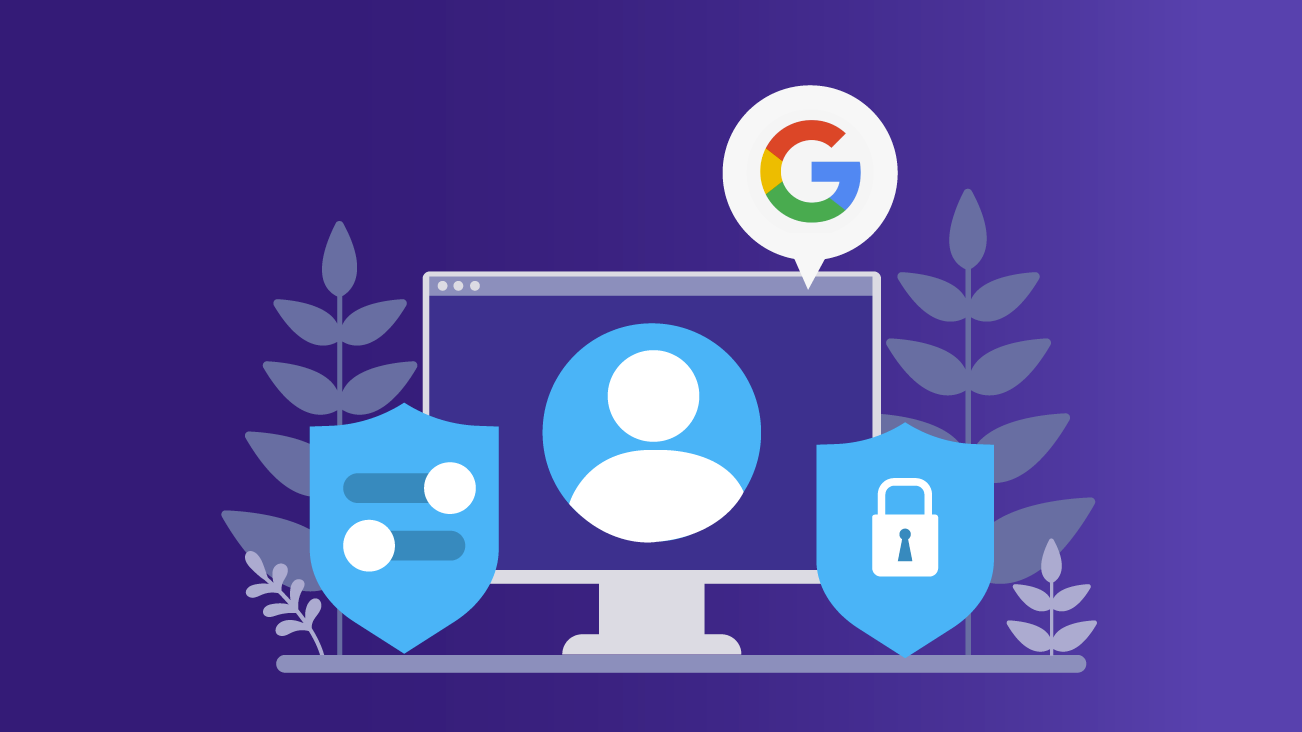Consumer Privacy, Advertising, and Google: The Opportunities Ahead

The announcement last week that Google will not pursue unique identifiers after deprecating the third-party cookie might have come as a surprise to some, but perhaps not to those that have been paying close attention. Google is in the people business and, as their post shared, 81 percent of people surveyed said that the potential risks of individual data collection outweigh the benefits. From Google's post:
Today, we're making explicit that once third-party cookies are phased out, we will not build alternate identifiers to track individuals as they browse across the web, nor will we use them in our products.
While the rest of the digital world has been moving in this direction over the past 18 months, it should still be recognized as big news that Google formally took this firm, public stance, especially given the financial significance and reputation of its advertising platform. Yes, let's not forget that Google is first and foremost an advertising platform, says two guys with Pixel phones, Android Auto-enable vehicles, Google Home speakers, and Google Analytics certifications. In fact, Google remains the largest advertising platform in the world and much of the digital ad ecosystem will adapt to its proposals and standards.
But rather than a harbinger of doom and gloom, as many seem to have interpreted Google's announcement, we see a genuine opportunity, for consumer privacy, for advertisers, and yes, even for Google.
| Alex Moore, SVP of Analytics & Insight | |
| Andrew Garberson, SVP, Marketing Services |
Why Is This Not Surprising?
Bounteous has been talking about this a lot, including but not limited to both of us (Alex and Andrew). Last week's announcement is perhaps unsurprising given that Google Chrome already made its intentions clear, just over one year ago, that support for third-party cookies would be phased out within two years (by January 2022). Privacy is increasingly an expectation for consumers, and for Google to try to work around that expectation with some kind of cookie "replacement" would be short-sighted and self-defeating.
To be honest, it was the only sustainable choice. The regulatory environment of 2021 put Google in the crosshairs of privacy advocates worldwide. Google might try to play a game of cat and mouse with other browsers and mobile manufacturers, who themselves have been promoting new privacy standards, but that too would draw the ire of consumers.
Add to this the mounting antitrust pressures facing Google, should it unleash its massive user graph to monopolize targeted advertising across its Chrome and Android ecosystem. The winds were all blowing in the same direction, and Google chose the obvious (and right) path.
Why Is This a Good Thing for Consumers?
The benefits of consumer privacy are widespread and nearly unquantifiable.
For consumers, trust in a brand is everything, and more privacy-savvy consumers with more options equal a far more discerning audience demanding greater accountability. This is good news for consumers. As The Economist wrote last month, the era of complacent tech firms staking their vast and permanent land grab may be ending—due to regulatory pressures and increasing consumer awareness—and so the pressure is on for these household-verb brands to pay attention.
Our digital privacy is increasingly viewed as a right and expectation. Consumers tend to express alarm ("That’s so creepy!") when we perceive an advertiser has pushed the value exchange out of balance—when the old mantra "right message, right time" becomes uncomfortable by delivering messages that are too specific and timing that is too precise.
We are firm believers in the power of responsibly-sourced first-party data to create great ad and customer experiences. While many things may change in our industry, that will never change.
As it turns out, clean data has been the key all along.
Why Is This a Good Thing for Advertising?
There's strength in numbers. Display advertising in the future will be based on cohorts, not cookies. Users will be grouped into cohorts for more targeted advertising, without the need to reveal to advertisers the specific sites they visit.
These cohorts will be created using on-device machine learning techniques to group a user into specific interest categories, based on sites they visit or even actions they might perform on those sites—while only sharing their cohort label with advertisers. This technology is called "FLoC," or the Federated Learning of Cohorts. The cohort might contain thousands of users, but would still be useful for advertising, and it would keep a user's web browsing private.
In a study published in January, Google claims that FLoCs are able to generate a nearly 350 percent improvement in ad recall, compared to a random user grouping, and a 70 percent improvement in precision. In short, this method provides great results without the risk of compromising any personally-identifiable information.
Google Ads and Google Marketing Platform have been using similar technology for a few years to model conversion data from Safari. There's more modeling involved in today's data collection and ad optimization infrastructure than you might guess. This trend will simply continue to accelerate.
Our industry is very, very close to being able to deliver the same advertising and conversion performance we have today without the need for privacy-invading tracking IDs or cookies. Performance is not at odds with privacy. We can deliver both to the wider web. Other current identity resolution solutions are simply seeking new ways of tracking individuals.
Obviously, Google's owned ad network will continue to represent a major slice of media mix for major brands and Google will still use aggregate browsing behavior with owned properties, like Google Search Ads, Gmail, YouTube, etc.
But the most interesting part of the road ahead concerns publishing partners who represent the vast majority of global ad inventory. Advertisers rely on free, premium content from publishers of all sizes to create valuable advertising inventory. This inventory will still be accessible through Programmatic Guaranteed deals when both the publisher and the advertiser have consenting first-party data.
Granular changes will occur in the way that we access, categorize, and measure this critical ad inventory, but our strategies will not be impacted. In fact, we feel that analytics-minded performance marketers (like, say, Bounteous folks) are extremely well-positioned to continue advising and consulting with major brands to deliver real results because of our alignment with Google and wide range of services and technology offerings.
Why Is This a Good Thing for Google?
It should not be a leap to assume that Google can deliver advertising performance without invasive tracking, as a Googler recently reminded us. Google is the best in the business with machine learning.
This shift can also be seen as an opportunity for a very small number of very large advertising platforms that are designed for scaled audience-based targeting. The Googles, Facebooks, and Amazons of the world built their empires on aggregated affinity and propensity data that is only accessible with a deep customer relationship like our dozens of daily searches or half of our online orders.
In the past year, there's been so much uncertainty about what would happen next with Google and unique identifiers. Now that we know the way forward, there's a tremendous opportunity to rebuild our industry with privacy in mind and rewrite the advertising social contract between content producers and content consumers. That is good for us, as digital citizens, and good for Google, too.
This is what's right, and Google is playing the long game. That will be good for Google's brand perception, and therefore its dominance in advertising, far into the future.
How Should Your Organization Be Preparing?
If your organization hasn't yet invested in a first-party data infrastructure, start today. The advertising landscape will not be different when you wake up tomorrow, but a mental shift toward first-party data and investment today in well-crafted remarketing and lookalike audiences will provide a foundation for future campaigns.
Remember: Always test and take advantage of the tools that Google gives you. To become comfortable with a cohort-driven audience strategy, we recommend that advertisers test FLoC cohorts when they release to tools like Google Ads. Running head-to-head tests of FLoC audiences versus a traditional audience segment will allow companies to benchmark ad performance and conversion data.
Privacy Sandbox APIs will be available in Google Ads and Google Marketing Platform in early Q2 2021. Consider making use of current automated campaign optimizations like Smart Bidding and Conversion Modeling to train display and search advertising platforms. Automation and modeling will become the standard moving forward.
We recommend that every business revisit and revise its Measurement Strategy to plan for a cookieless, cohort-based future. We've known for some time that the future of digital analytics involved predictive modeling and other advanced data science models. This news only confirms that fact.
Finally, create a technology plan. Small steps may include adopting and deploying Google Analytics 4, the latest version of Google Analytics that is faster and more extensible than its predecessor. Investing in a Customer Data Platform (CDP) to make customer data actionable as cohort inputs for advertising is a logical next step for larger organizations. Consider that site personalization also makes use of cookies to deliver customized experiences. Investing in customer and cohort data now will give your organization a competitive advantage in the near future.




